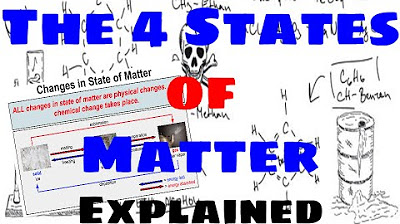Asynchronous Teaching- Standard 6-8
Summary
TLDRIn this educational video, Mr. Stewart introduces the topic of laws, regulations, and policies with a humorous anecdote about a city in Georgia that banned eating fried chicken with a fork. He guides viewers through the legislative process, emphasizing the roles of the government branches, particularly the legislative branch's power to legislate. Stewart encourages pre-assessment, platform reading, and a foundational video review before delving into the intricacies of law-making, including the committee process and presidential veto. He concludes with an interactive game to simulate bill passage and an exit ticket for reflection, aiming to deepen understanding of the legislative process.
Takeaways
- 📜 The lesson is about understanding laws, regulations, and policies, with an introduction to the legislative process and the roles of different branches of government.
- 🍗 An amusing example of a law from Georgia in 1916, which made it illegal to eat fried chicken with a fork, is used to illustrate the diversity of laws.
- 🏛️ The legislative branch, specifically Congress, is highlighted as the body responsible for making laws, as granted by the U.S. Constitution.
- 📊 A pre-assessment is suggested to identify the branch of government with law-making power and to define key terms such as 'bill' and 'public policy'.
- 📚 The importance of reviewing the lesson materials and watching the foundational video on laws and regulations is emphasized for better understanding.
- 🤔 The process of a bill becoming a law is detailed, starting from an idea, introduction to a committee, revisions, voting, and potential veto by the President.
- 🏢 The roles and functions of the three branches of government are briefly reviewed, with an emphasis on the legislative branch's law-making authority.
- 📝 Only Congress has the power to repeal a law, while the Supreme Court can declare a law unconstitutional, effectively rendering it invalid.
- 🎮 An interactive game is introduced to simulate the process of a bill becoming a law, allowing participants to represent a district and make decisions.
- 📋 The game's outcome and certificate are important, requiring participants to take screenshots or photos for submission as proof of completion.
- 🤔 Reflecting on the game and considering how it was played is encouraged, along with answering questions related to the experience.
Q & A
What is the main topic of Mr. Stewart's lesson?
-The main topic of Mr. Stewart's lesson is laws, regulations, and policies.
What unusual law did a city in Georgia pass in 1916?
-A city in Georgia passed a law in 1916 stating that it is illegal to eat fried chicken with a fork.
Which branch of government is granted the power to make laws?
-The legislative branch of government is granted the power to make laws.
What is the first step in the process of creating a law?
-The first step in creating a law is having an idea for a law.
Can a bill be introduced in either the House of Representatives or the Senate?
-Yes, a bill can be introduced in either the House of Representatives or the Senate.
What happens to a bill after it is introduced and before it goes to the floor for a vote?
-After a bill is introduced, it goes to a committee where it is researched, discussed, and possibly amended before being sent to the floor for a vote.
What is the special power the president has to reject a bill?
-The president has the power to veto a bill, which is a way to reject it and prevent it from becoming law.
Can the Supreme Court repeal a law?
-The Supreme Court cannot directly repeal a law, but it can declare a law unconstitutional, which effectively renders the law invalid.
Who has the authority to repeal a law?
-Only Congress has the authority to repeal a law by introducing a new bill that addresses the issues in the previous law.
What activity does Mr. Stewart suggest to help understand how a bill becomes a law?
-Mr. Stewart suggests playing a game that simulates the process of a bill becoming a law, where participants choose a district to represent and work through the legislative process.
What is required at the end of the game to complete the activity?
-At the end of the game, participants are required to take screenshots or photos of two screens: the final results of their bill and their certificate, which includes details of the game session.
Outlines

هذا القسم متوفر فقط للمشتركين. يرجى الترقية للوصول إلى هذه الميزة.
قم بالترقية الآنMindmap

هذا القسم متوفر فقط للمشتركين. يرجى الترقية للوصول إلى هذه الميزة.
قم بالترقية الآنKeywords

هذا القسم متوفر فقط للمشتركين. يرجى الترقية للوصول إلى هذه الميزة.
قم بالترقية الآنHighlights

هذا القسم متوفر فقط للمشتركين. يرجى الترقية للوصول إلى هذه الميزة.
قم بالترقية الآنTranscripts

هذا القسم متوفر فقط للمشتركين. يرجى الترقية للوصول إلى هذه الميزة.
قم بالترقية الآنتصفح المزيد من مقاطع الفيديو ذات الصلة

The Four States of Matter - Explained

Lab Equipment - Explained

3. Gr 11 Life Sciences - Population Ecology - Theory 3 Mark Recapture Method

4. Gr 11 Life Sciences - Population Ecology - Worksheet 1

PENJASKES KELAS X - SOFTBALL

Introduction to Culture [AP Human Geography Review Unit 3 Topic 1]

Menentukan Mr ( massa molekul relatif )
5.0 / 5 (0 votes)
